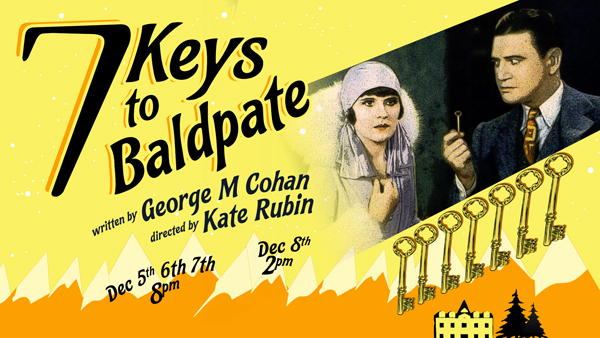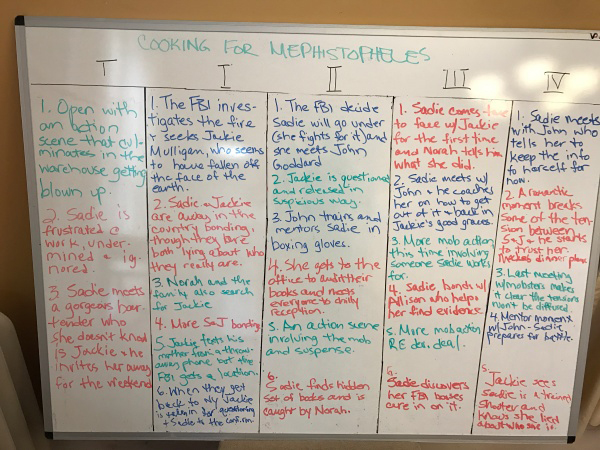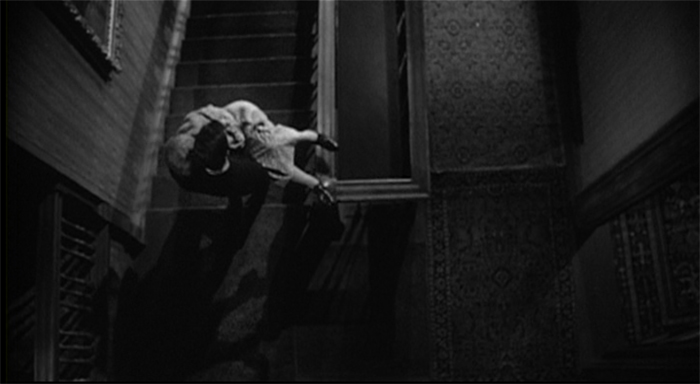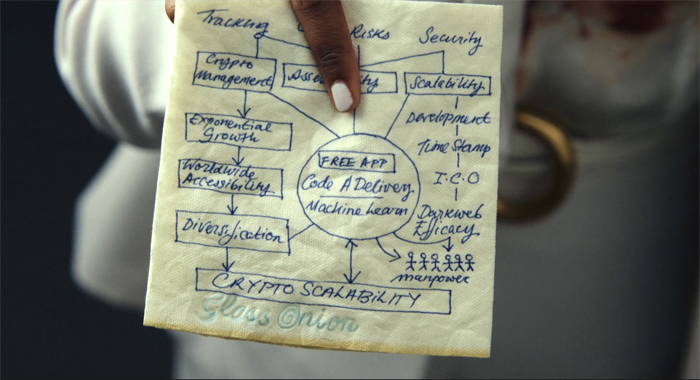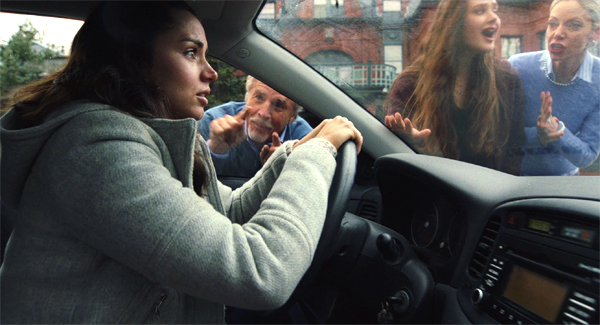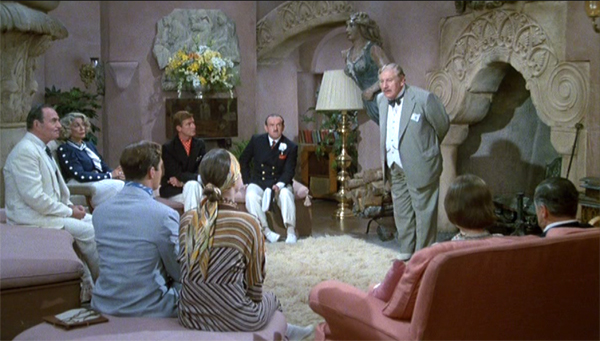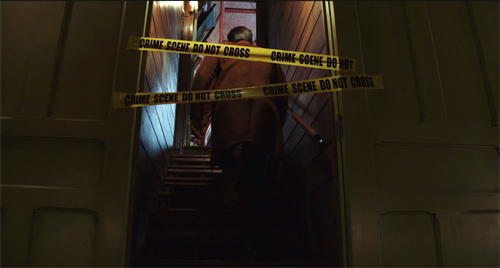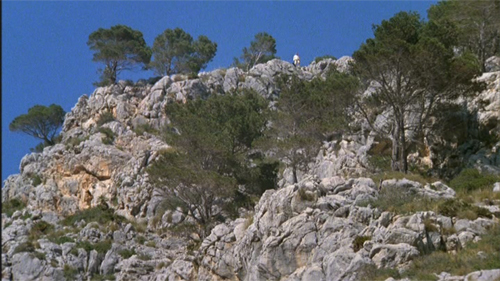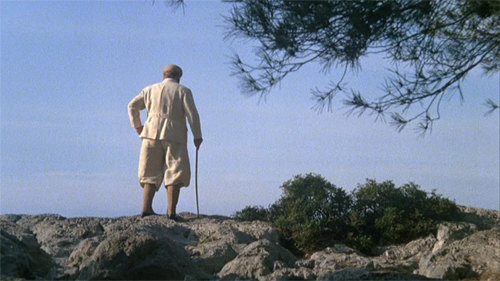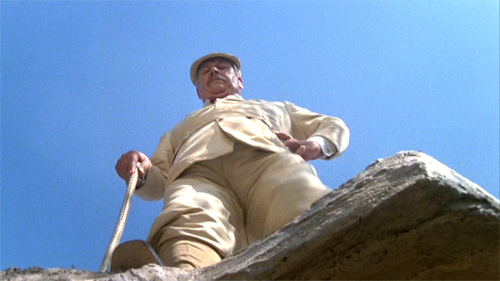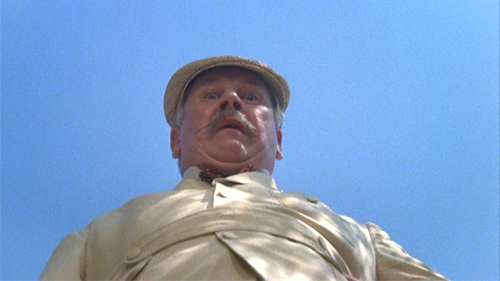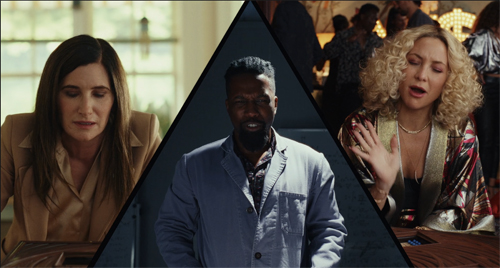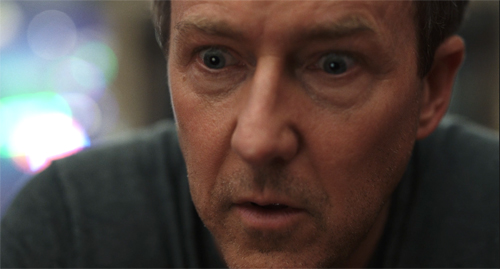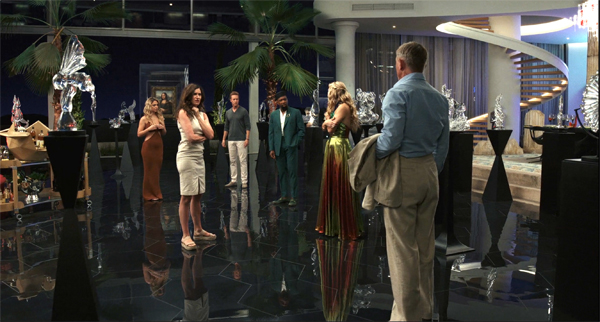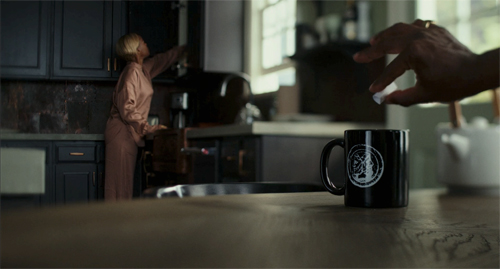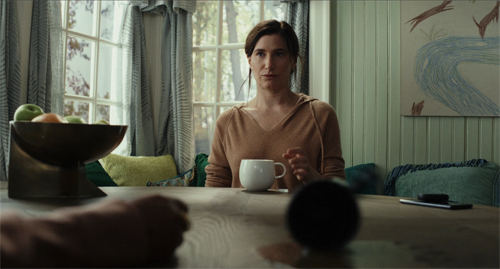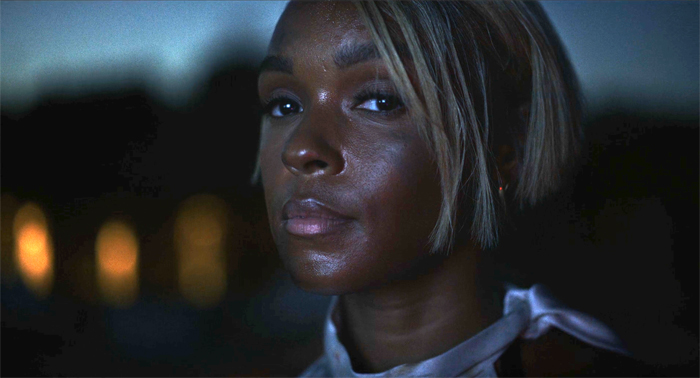Archive for January 2023
The reader is warned
Where the Crawdads Sing (2022; production still).
DB here:
When I wasn’t paying attention, along came Where the Crawdads Sing (2018 novel, 2022 film). The book was a huge bestseller, while the movie version was panned by critics but attracted a good-sized audience. It exemplifies how strategies of nonlinear storytelling have become deeply woven into mainstream entertainment.
It has an investigation plot, structured around the trial of “swamp girl” Kya, who’s accused of the murder of her boyfriend Chase in the marshlands of North Carolina. Through flashbacks we learn of her desperate childhood, as she is abandoned by her family and castigated by the townfolk. She learns to live alone in the family cabin and fills her days drawing precise images of the natural life around her. A well-meaning young man teaches her to read but he too he leaves her to struggle alone. Soon she meets Chase, a charming good-for-nothing. Is his fall from a swamp tower an accident, or did someone push him? A kindly local attorney takes her case, and the plot climaxes first in the jury’s verdict and then a twist that reveals what happened at the scene of the crime.
We’re so used to plots like this that we may forget how nonlinear they are. In the Crawdads film, the court investigation probes the circumstances of Chase’s death, but the flashbacks, instead of illustrating stages of the crime, supply Kya’s life story in chronological order. They contextualize the long-range causes of her dilemma. Accordingly, they’re narrated by her in voice-over. Titles supply the relevant timeline, dating episodes from 1963 through to 1970, the year of the trial.
All of these strategies have become familiar from a century of popular storytelling. A court case as an occasion to visit the past goes back at least to Elmer Rice’s On Trial (1914), although the play dramatizes testimony in a way that Crawdads doesn’t. (Its flashbacks, more boldly, are in reverse order.) The crosscutting of past and present has become common to explain (or obfuscate) ongoing story events. Tying us to a character’s viewpoint and letting the character’s voice narrate what we see is likewise a standard device in modern media. And of course an investigation plot is inherently nonlinear. The task is for someone to uncover the “hidden story” of what occurred in the past.
Simple though it is, Where the Crawdads Sing shows just how pervasive devices associated with mystery and detective fiction have become in mainstream storytelling. Told chronologically, the story would be a biography of Kya (and would presumably have to reveal how Chase died). Instead, the film becomes what Wikipedia calls “a coming-of-age murder mystery.”
By splitting the chronological story into two parts and interweaving them, manipulating viewpoint, and rearranging temporal order, the film tries to achieve interest and suspense. We know from the start that Chase is dead, so we watch every scene with him for clues as to what could have caused it. Tension gets amplified as time passes, when the shifts between the courtroom drama and the day of Chase’s death come faster and faster. These effects couldn’t be achieved with a linear layout.
One of the major points of Perplexing Plots is to remind us just how much of popular entertainment trades on narrative strategies forged in the big genre of mystery. Once we’re reminded, we can ask: How did those strategies get implemented? How did audiences come to understand and enjoy these highly artificial ways of telling stories?
I promise not to keep plugging the book on this blog, but allow me one more notice. A Q and A with me has been published on the Columbia University Press site. It tries to inform any souls whom fate has cast my way about the argument of the book. You may find it of interest.
I’m taking the occasion to note some features of the book not advertised elsewhere. Perhaps they too would appeal to you, especially if you’re interested in some of the choices a writer has to make.
Obscure is as obscure does
First, the book draws on some unorthodox sources. Most obviously, I tried to canvass obscure novels and plays that are now forgotten but that did try some experiments with nonlinear storytelling. Who’d expect a reverse-chronology play in 1921, years before Pinter’s Betrayal (1978)? A 1919 play anticipates Rear Window by offering testimony from a deaf witness and then a blind one. The first version plays out on stage in pantomime, the second in a completely dark setting. A 1936 novel offers a string of conflicting character viewpoints on a single situation, revising and correcting previous accounts, well in advance of Herman Diaz’s recent novel Trust. A 1919 play depicts a woman in different aspects, as seen by the people who know her. These instances of what we now call “complex narrative” belong to what literary scholars have called “the great unread,” the thousands of pieces of fiction and drama that haven’t become canonical through enduring popularity or academic favor.
Other precedents are dimly recalled but seldom revisited, such as George M. Cohan’s play Seven Keys to Baldpate (1913) and W. R. Burnett’s Goodbye to the Past (1934). How many people would be aware of Kaufman and Hart’s reverse-chronology play Merrily We Roll Along (1934) if Stephen Sondheim hadn’t turned it into a musical? The very existence of these marginal works helps support the premise that a lot of what we consider innovative today has broad historical roots. They just aren’t as vivid to our memory as more recent instances. But fifty years from now, will many viewers remember contemporary experiments like Go (1999) and Shimmer Lake (2017)?
The book uses other unorthodox sources. I put craft technique at the center, and so it makes sense to look at the principles that writers of fiction and drama were using. Of necessity I review the emerging idea of the “art novel” at the end of the nineteenth century, with Henry James as spokesman for this trend. In addition, unlike most mainstream literary histories, Perplexing Plots consults contemporary manuals for aspiring writers. These books are the progenitors of all those how-to-get-published books that fill Amazon today, and they reveal a surprising sophistication. Manuals allow me to show how a new self-consciousness about linearity, particularly point of view, became central to popular writing as a craft. For example, a now-forgotten critic, Clayton Hamilton, epitomizes the willingness of ambitious writers to try out new possibilities.
So one choice I made was to search out fiction, drama, and films that have fallen into obscurity. Another was to look at the nuts and bolts of plotting, as practitioners seemed to be conceiving it. These help explain why many novels and plays, major and minor, began tinkering with innovative storytelling.
Time as space
From Karen Loves TV: “Contemplations on the Whiteboard.”
A nonlinear plot has a geometrical feel to it, so one way of thinking about it is to envision it as a table or spreadsheet. Where the Crawdads Sing could be laid out in a double-column table, with each present-time scene aligned with the past sequence that follows it.
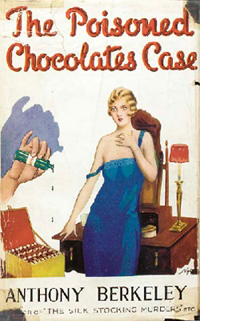 There are more complex possibilities as well. Griffith’s Intolerance (1916) would constitute a four-column layout displaying each different historical epoch. Perhaps this is one sense of the term that came into use in the 1940s: “spatial form” as a description of unorthodox narratives. The principle is akin to the whiteboard “season arcs” and “episode outlines” used in writers’ rooms to lay out story lines threading through a film or TV series.
There are more complex possibilities as well. Griffith’s Intolerance (1916) would constitute a four-column layout displaying each different historical epoch. Perhaps this is one sense of the term that came into use in the 1940s: “spatial form” as a description of unorthodox narratives. The principle is akin to the whiteboard “season arcs” and “episode outlines” used in writers’ rooms to lay out story lines threading through a film or TV series.
Novelists have long made use of such charts. The most famous is that prepared by James Joyce for Ulysses, where each chapter is assigned a different color, body organ, and so on. This was published in Stuart Gilbert’s 1930 book. Because the rights to reproduction are obscure, we regrettably didn’t include it my book. No surprise, though, it’s available online.
I did, however, obtain rights to a less-known but rather brilliant table included in Anthony Berkeley’s Poisoned Chocolates Case (1929). Later chapters of Perplexing Plots use tables of my own devising to clarify the complicated layout of Richard Stark’s Parker novels, the chapter structures of Tarantino films, and the alternating viewpoints and time schemes of Gone Girl. There will always be readers who complain that these tables are just academic filigree, but I believe that they help us appreciate the intricate interplay of time, segmentation, and viewpoint. They show how precise the narrative architecture of mystery fiction can be.
To spoil or not to spoil
For decades, criticism of mystery fiction has labored under the expectation that a critic must not reveal a story’s ending, or the story’s central deception. In journalistic reviews of literature and film, the writer is expected to keep such things secret, but even academic studies of crime fiction put pressure on the critic to maintain the surprise of whodunit and howdunit.
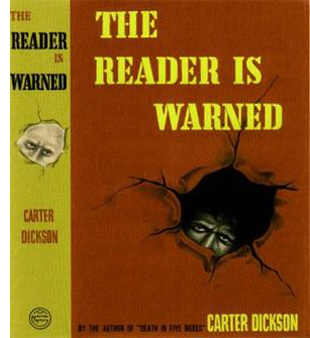 But this limits our ability to study plot mechanics. I chose to preserve the secrets of the books, plays, and films as much as I could (as with my Crawdads sketch). Still, when the analysis demanded exposure of the “hidden story,” I did so. This doesn’t result in a lot of spoilers because some canonical texts, like The Maltese Falcon, Laura, and The Big Sleep, are very well-known. But I lay out some strategies of deception in novels by Christie and Sayers and films such as Gone Girl and The Sixth Sense. There really was no other way to show points of narrative craft at work in them, particularly the fine grain of writing or filming that shapes our response. I regret most exposing the central feint of Ira Levin’s novel A Kiss Before Dying, so readers who aren’t familiar with the book may want to read it before reading my account. Otherwise, I can only cite the title of one of Carter Dickson’s trickiest novels.
But this limits our ability to study plot mechanics. I chose to preserve the secrets of the books, plays, and films as much as I could (as with my Crawdads sketch). Still, when the analysis demanded exposure of the “hidden story,” I did so. This doesn’t result in a lot of spoilers because some canonical texts, like The Maltese Falcon, Laura, and The Big Sleep, are very well-known. But I lay out some strategies of deception in novels by Christie and Sayers and films such as Gone Girl and The Sixth Sense. There really was no other way to show points of narrative craft at work in them, particularly the fine grain of writing or filming that shapes our response. I regret most exposing the central feint of Ira Levin’s novel A Kiss Before Dying, so readers who aren’t familiar with the book may want to read it before reading my account. Otherwise, I can only cite the title of one of Carter Dickson’s trickiest novels.
Part of the justification for hiding the legerdemain is the doctrine of “fair play.” I trace how this idea emerged in the Golden Age of detective fiction, when a story was treated as a game of wits between author and reader. In principle, nothing necessary to the solution of the puzzle should be withheld, though it can be disguised or hinted at. One thing I learned in writing the book is that fair play has become a premise of most duplicitous narratives in any genre, from horror to science fiction. People don’t realize how much the maneuvers of Psycho and Arrival owe to the belief that the audience should in principle be able to go back and see how we were misled. (We can do this with the “missing clue” in Crawdads as well.)
Fair play encourages the author to be ingenious and entices the audience to appreciate artifice-driven construction. Both effects are legacies of classic detective fiction, and they still shape much mainstream entertainment.
Thanks to Maritza Herrera-Diaz of Columbia University Press for arranging for the Q & A published on the Press site.
The phrase “the great unread” is used by Margaret Cohen in The Sentimental Education of the Novel (Princeton, 1999) and cited in Franco Moretti, “The Slaughterhouse of Literature,” MLQ: Modern Language Quarterly 61, 1 (March 2000), 208.
As I’ve indicated in an earlier entry, Martin Edwards’ The Life of Crime is a vast and entertaining survey of the history of mystery fiction. It was crucial help to me in writing Perplexing Plots. Martin, an advance reader of the manuscript, has been kind enough to discuss my book on his blog.
Other early responses to the book have been encouraging. Michael Casey reviewed it for The Boulder Weekly, and Doug Holm discussed it on KBOO on his show Film at 11. My thanks to both these commenters.
Psycho (1960): Misdirection and fair play all in one shot.
GLASS ONION: Multiplying mysteries
Glass Onion (2022).
DB here:
Rian Johnson’s enthusiasm for classic mysteries made it inevitable that I’d get interested in writing about Knives Out. Although I merely allude to the film in Perplexing Plots, I devoted a blog entry to it. While thinking about a follow-up on Glass Onion, I began a rewarding correspondence with Jason Mittell, adroit blogger and author of Complex TV: The Poetics of Contemporary Television Storytelling. Today’s entry reflects my thoughts after this exchange of ideas.
Despite the near-universal acclaim received by Glass Onion, it didn’t whet my interest as much as its predecessor. It’s a little too campy and overproduced for my taste. But Johnson’s ingenuity in manipulating conventions of the Golden Age detective stories by Christie, Sayers et al. makes it ripe for the sort of analysis I try out in the book. So here we go.
Needless to say, there are spoilers for Glass Onion and Knives Out. But I bet you’ve seen both films.
Tools of the trade
Knives Out.
Plotting a story is a craft, and it has some essential tools. There is, for instance, the ordering of events. Will you present events in linear story sequence, or will you arrange them in a nonchronological pattern? You can’t avoid choosing one or the other or some combination of the two.
There’s also the matter of viewpoint. Will you attach the audience to what a single character experiences, or will you roam among several characters?
And there’s segmentation: How will you break your plot up into chunks? In literature, we have sentences, paragraphs, and chapters. In theatre, scenes and acts. In film, scenes and sequences (and sometimes reels or chapters). Even one-shot movies have moments of pause or shifts of viewpoint that mark off phases of the action.
These are forced choices that every storyteller must face. It’s these three–linearity, viewpoint, and segmentation–that Perplexing Plots relies on in order to analyze both mainstream storytelling and mystery fiction.
In addition, the craft requires the audience to be engaged–at least interested, at most emotionally moved. You must choose whether to get your audience to empathize with certain characters or to keep the characters remote and unknowable. Do you want to arouse anger, approval, or some other emotion? You must decide how the choices of linearity, viewpoint, and segmentation can trigger these responses.
For example, your plot can usually build empathy for a character by showing incidents in which that person is treated unfairly. Those actions will be more intense if they’re rendered from the character’s viewpoint. This is what Rian Johnson does in Knives Out when he shows Marta persecuted by the vindictive Thrombey family, and then exploited by Hugh. The disparity in power (David vs Goliath) heightens our sense of indignation and makes the finale seem to be poetic justice (My house/my rules).
Some emotions depend directly on choices about chronological sequence. If your plot signals that some past events are significant but then doesn’t reveal them, you’re using linearity to create curiosity. If the plot summons up anticipations about particular future story events, you create a degree of suspense. If your plot introduces an event that momentarily seems out of keeping with the linear story, you can summon up surprise.
Each of these “cognitive emotions” (“cognitive” because they rely on knowledge and belief) is shaped by perspective and segmentation. Creating curiosity, suspense, and surprise depends on viewpoint: each character will have different states of knowledge about the course of events. In Knives Out, Hugh Drysdale is not suffering curiosity about whodunit: he knows he did it. But because we’re attached to Marta and detective Benoît Blanc, we share their state of uncertainty–and suspense about what may come.
Similarly, decisions about segmentation will often be made based on the cognitive emotions in play. You might end a book chapter or a play’s act or a film’s scene on a note of curiosity (“Then whose body is in that grave?”), suspense (the stalker draws near the prey), or surprise (“I’m your father!”).
As my examples from Knives Out suggest, the three tools I’ve picked out have special purposes in a mystery story. Perhaps one reason for the enduring popularity of mystery as a narrative device is its ingenious use of linearity, viewpoint, and segmentation to build cognitive emotions, especially curiosity. But a perennial problem of the genre is to build up other emotions. So we need sympathetic detectives and victims along with unsympathetic suspects, cops, and gangsters to engage us. Some writers also vamp up the suspense factor by putting the investigator in danger, a hallmark of hardboiled stories and domestic psychological thrillers (Rinehart, Eberhart, and their modern counterparts). Perplexing Plots traces some of these creative options through the history of mystery fiction.
Hidden stories
Evil Under the Sun (1982).
The mystery plot centered on an investigation tells two partial and overlapping stories. The investigation is presented as an effort to disclose what happened in the past, an incomplete and puzzling chain of events. Writers in the 1920s started to call this “the hidden story.”
In the standard case, the detective reveals those events and makes a single continuous story out of everything. The revelation is typically saved for the climax of the present-time story line, with the detective explaining the missing events in a summing-up. Often all the suspects are gathered and the detective reviews the evidence before presenting the solution to the puzzle. In other instances, the detective may confide the results to a friend or an official.
The summing-up is often a verbal performance, with the detective recounting the hidden story. A classic example is the Christie novel Evil Under the Sun (1941), in which Hercule Poirot explains to the assembled suspects how the crime was committed. To make this scene less monotonous onscreen, filmmakers often illustrate the hidden story by brief flashbacks, as in the 1982 film adaptation of the Christie novel. Johnson employs this strategy in Knives Out, supplying quick shots of how Hugh’s scheme was enacted.
The detective’s explanation often rests on yet another hidden story line: parts of the investigation we didn’t see. Very often the detective operates backstage, pursuing clues we didn’t notice. Sherlock Holmes absents himself for a good stretch of The Hound of the Baskervilles, leaving Watson to explore the mystery of the Moors. Only later do we learn what Holmes was up to. Rex Stout’s Nero Wolfe likes to keep his assistant Archie, our narrator, ignorant of information that he asks other operatives to dig up for him.
As a result, in the final summing-up, the detective’s filling in of the plot may include telling us of his offstage busywork. Again, that may be rendered on film as flashbacks to make sure the audience appreciates the sleuth’s cunning. These might include flashbacks that replay parts of the inquiry, but from a new viewpoint. In the film version of Evil Under the Sun, we see Poirot’s first visit to the cliff’s edge.
But the replay during his summing up expands this by dwelling on the vertiginous effects he feels.
In Glass Onion, Johnson finds a fresh way to treat the detective’s offstage machinations, and that depends, as you’d expect, on exploiting the three basic tools.
A package of puzzles
The most obvious innovation involves segmentation. Johnson splits his plot into two almost exactly equal halves. The first, running about seventy minutes, is a more or less complete classic puzzle.
Tech magnate Miles Bron invites his old friends for a weekend party on his private island. Their affinities go back to their days hanging out together in a pub, the Glass Onion. A fifth friend, Cassandra “Andi” Brand, co-founded Alpha with Miles, but he cheated her out of her share when she refused to expand into questionable paths. Andi shows up at the island to join what Miles calls the Disruptors. There’s Claire, an ambitious politician; Lionel, a scientist working for Miles on a new energy source; Birdie, a scatty fashionista; and Duke, an aggrieved online spokesman for patriarchy. Famous detective Benoît Blanc joins the party, even though it’s unclear who invited him.
These characters are introduced in a rapid opening sequence that shuttles us from one to the other as each gets a puzzle box. Crosscutting and split-screen imagery yield an omniscient narration; we seem to know everything. Johnson points out the expositional advantages: “The box gave it an element of fun, a spine, and a way for all the characters to be on speaker phone solving the mystery of how to open it together, so you see the dynamics between them in real time.”
Then we see a so-far unnamed woman receive a box and break it open. Finally we find Blanc himself, stewing in boredom in his bathtub. In all, a shifting spotlight has introduced us to all but one of the major characters.
Once the group assembles on the pier to board the ship that will take them to Miles’s island, the narration narrows its range and concentrates mostly on Blanc’s reactions.
In what follows, Blanc observes the others, occasionally trailing them, and asks questions about their pasts. By and large, this half of the film will be attached to him, though sometimes the narration will stray briefly to others (chiefly to give each a motive for killing Miles). The first half assigns Blanc the conventional role of curious investigator.
Miles has planned a murder game in which he’s the victim, but that puzzle collapses the first evening when Blanc solves it instantly. A new crime emerges: Duke abruptly dies of poisoning. And soon someone shoots Andi. Blanc gathers the suspects and announces he nearly has a solution. “It’s time I finished this. . . . Only one person can tell us who killed Cassandra Brand.”
In the spirit of Golden Age whodunits, Johnson has poured out a cascade of mysteries, big and small. Who sent Blanc the extra box? Why did Andi, still smarting from her courtroom loss to Miles, show up at his party? When Duke died, he drank from Miles’s glass, so who was trying to kill Miles? Duke’s pistol mysteriously disappears; who took it? The same person who killed Andi?
Johnson’s narration can be both reliable and unreliable. During the drinking session a quick long shot reveals that Miles forced Duke to take the poisoned glass. This is a daring gesture toward Fair Play (that some of us noticed), but Johnson will try to cancel our impression. He will soon offer a lying replay to blot this out.
To further swerve suspicion from Miles, Johnson uses viewpoint. We see Miles reacting in shock to a POV image of the fallen glass with his name on it, as if he were just realizing he, not Duke, was the target.
Of course he’s faking, but by privileging his viewpoint in order to underscore his reaction Johnson suggests he’s innocent. Cheating? Not really, just misleading. Johnson gives with one hand, takes away with the other–as his mentor Agatha Christie does in prose (as I try to show in the book).
Fugue states
So Blanc has a lot to explain. But instead of continuing the traditional summing-up denouement, Johnson pauses and in effect replays the first half of the film by concentrating on the detective’s offstage activities.
Turns out, Blanc has been much busier and less naive than he seemed in the first part. A conventional assembly-of-the-suspects climax would have included explanations of his scheming, but Johnson daringly fleshes these out to forty minutes that annotate scenes that we’ve already witnessed. In this play with linearity, gaps are filled, and new information is provided.
The second part starts with a young woman delivering the wrecked puzzle box to Blanc. She is not Andi but her twin sister Helen. (Yes, Johnson unblushingly taps the convention of false identity, with twins no less.) Andi is dead, killed by carbon-dioxide fumes in her garage. Helen suspects not suicide but murder and gives Blanc an account of Andi’s career through flashbacks. These bursts of nonlinearity skip freely from the gang’s youthful days to Miles’s cheating of Andi.
Moved, Blanc coaxes Helen to impersonate Andi and go to the party, as if accepting Miles’s invitation. (Blanc will convince the authorities to suppress news of Andi’s death for a time.) The two of them form a team to investigate Miles’s posse and find Andi’s killer. So now two puzzles–who sent Blanc the box? why did Andi, or rather “Andi,” show up at the island?–are set to rest. Just as important, as Knives Out focused our empathy on Marta, this second half gives us Helen as a sympathetic figure, so the puzzle element is enhanced by emotion.
Blanc’s saunters around the compound are now replayed as more purposeful, while “Andi” stands revealed not simply as an intruder but a snoop. Some scenes are only sampled, while others are fleshed out through viewpoint shifts. In addition, the narration offers hypothetical flashbacks when Helen and Blanc play with the possibilities of who might have killed Andi.
Driving the second part is the search for a crucial piece of evidence that would have won Andi the court case: the Glass Onion napkin on which she jotted down a plan for the company. After the trial she found it and told Miles’s circle; her murder was triggered by the killer’s plan to recover the napkin. When Helen finds it, she can confront Miles. In a final twist, it’s revealed that the bullet that apparently killed Helen was blocked by Andi’s diary. At her return to the group, Blanc can launch a proper summing-up and denunciation of the guilty.
The annotated replays run about 37 minutes. These incidents could have been much more concisely presented as part of Blanc’s explanation, but as Jason Mittell pointed out to me, this new plot structure gives the second part a dynamic we associate with another genre: a film tracing a big con, like The Sting. There’s a pleasure in seeing how scenes we interpreted one way now stand out as manipulated by Blanc and Helen.
Blanc’s explanations, and Miles’s efforts to block it, take another sixteen minutes. Eventually the Disruptors unite to support Andi, and Miles is facing murder charges. The film ends not with a shot of the complacent Blanc but of the righteous Helen/Andi, the co-protagonist of the second part, a figure of vengeance and vindication.
Replays that amplify and contextualize scenes we’ve already seen are common in mysteries and other genres. Johnson’s originality comes in building one long segment out of such replays. To make it work he relies on our memory of the chronological order of previous scenes to create a double-entry plot structure in which the detective’s backstage scheming revises and corrects our perception of the core action. You could lay out the action on a table of the sort I occasionally resort to in Perplexing Plots.
Johnson’s pride in folding the second half of the film back over the first part is teased when a guest at Birdie’s party explains the fugue that Miles has embedded in the puzzle box. “A fugue is a beautiful musical puzzle based on just one tune. If you layer this tune on top of itself, it starts to change and turns into a beautiful new structure.”
Johnson’s virtuoso play with segmentation has a place in the mystery story tradition; Perplexing Plots reviews several Golden Age examples. (One somewhat similar novel is Richard Hull’s Excellent Intentions of 1938.) You can imagine a version of Glass Onion that attaches its viewpoint to Blanc and Andi from the start, with the “infiltration” strategy of something like Notorious (1946) or Mission: Impossible II (2000). But that wouldn’t engage us through its gamelike, self-consciously artificiality. No film I can recall has so thoroughly routed the offstage activities of the detective onto a track parallel to that of the unfolding crime. Creating a double-column plot like this shows not only the cleverness of design demanded by mystery stories but something I stress throughout the book: the eager drive of popular storytelling toward innovation and novelty–within familiar boundaries.
Thanks to Jason Mittell for a stimulating correspondence and to Erik Gunneson and Peter Sengstock for further suggestions.
Johnson discusses how he shaped the guest assembly on the pier around Blanc’s viewpoint in “Notes on a Scene” in Vanity Fair. A lengthy piece in Vulture explains some of the citations and in-jokes in the film.
P.S. 13 January: Thanks to Antti Alanen and Fiona Pleasance for correction of two names!
Glass Onion.













